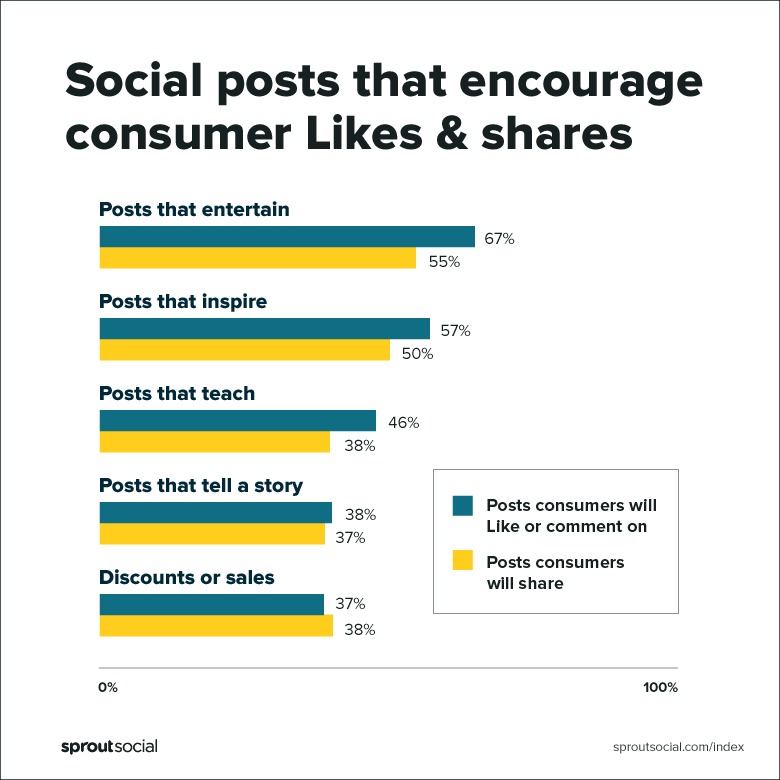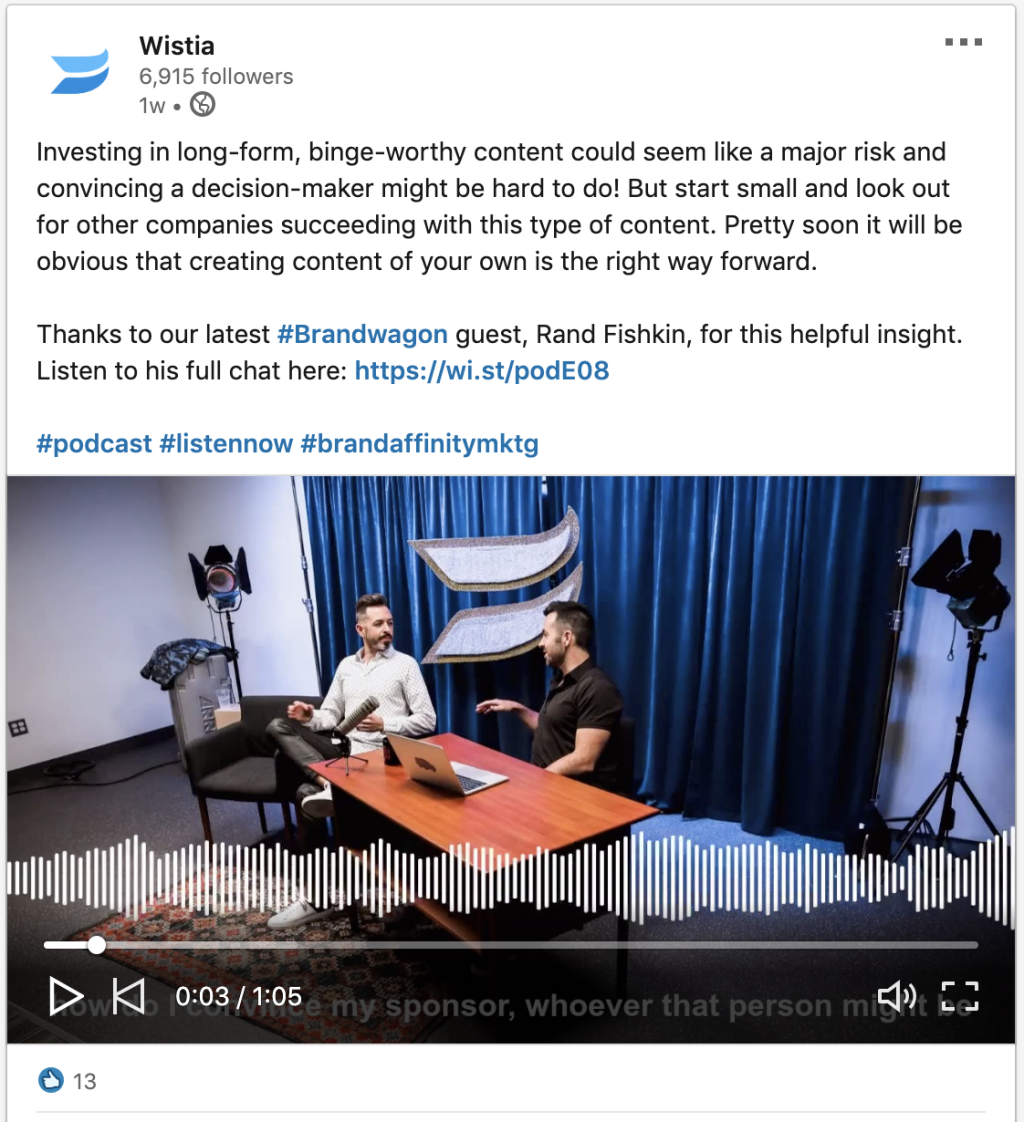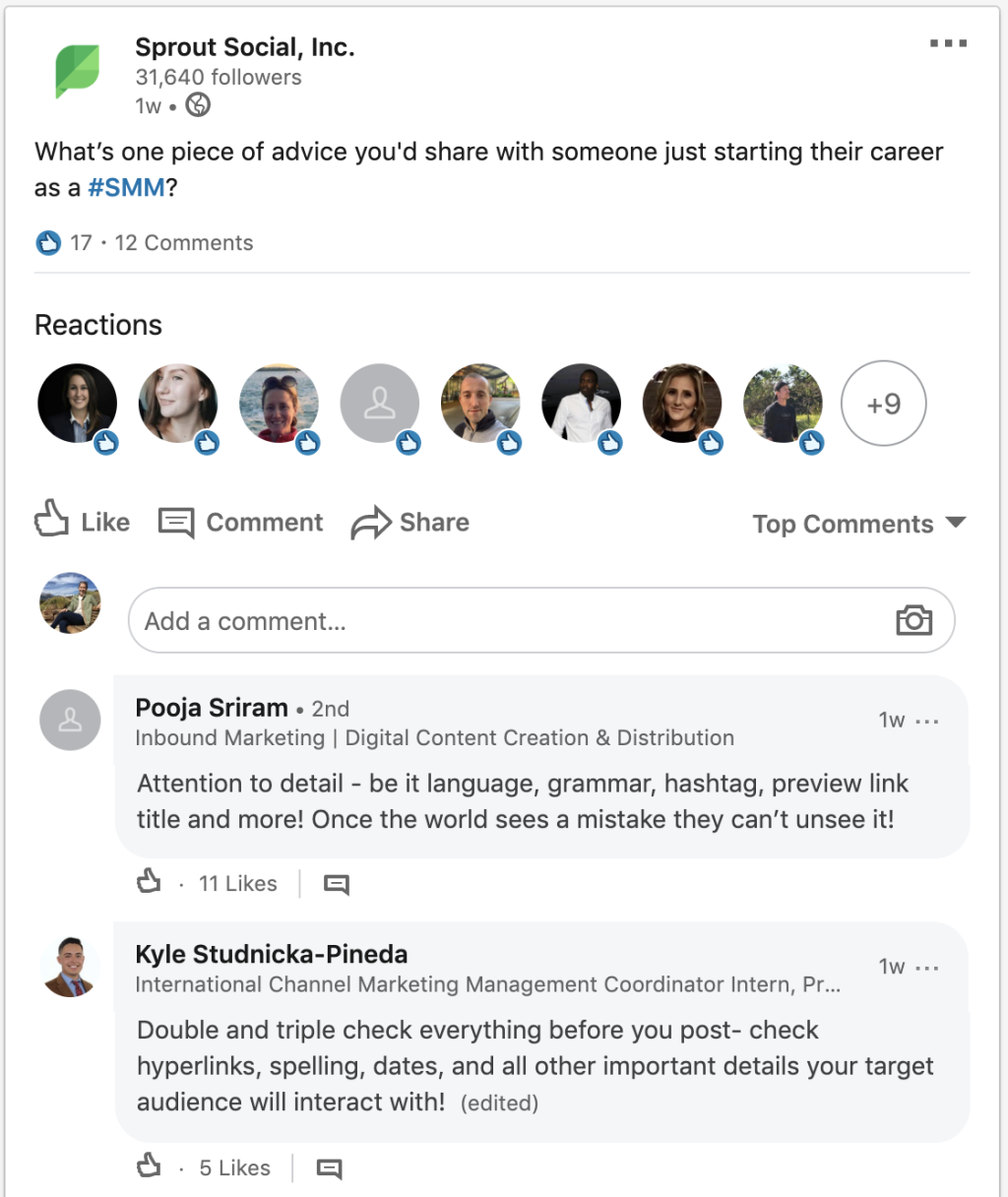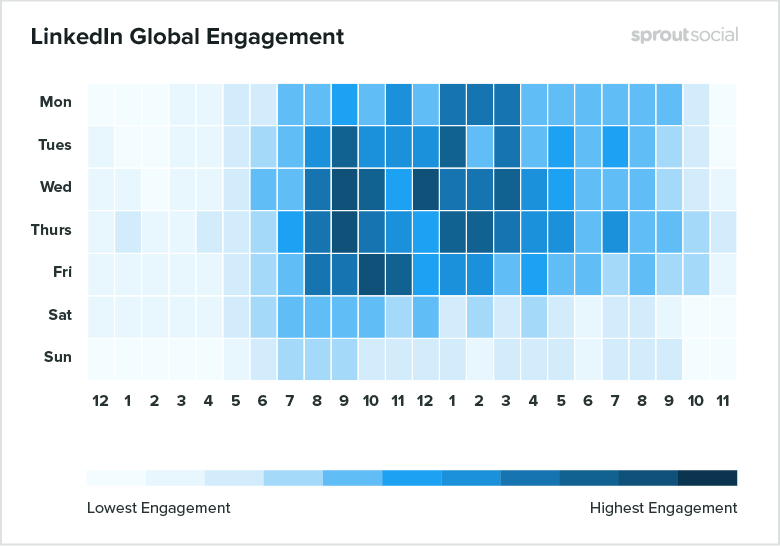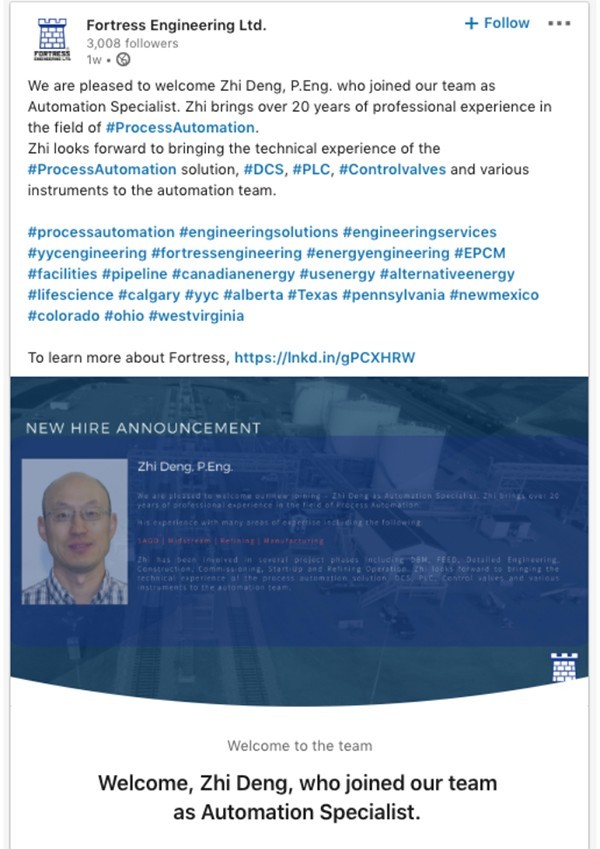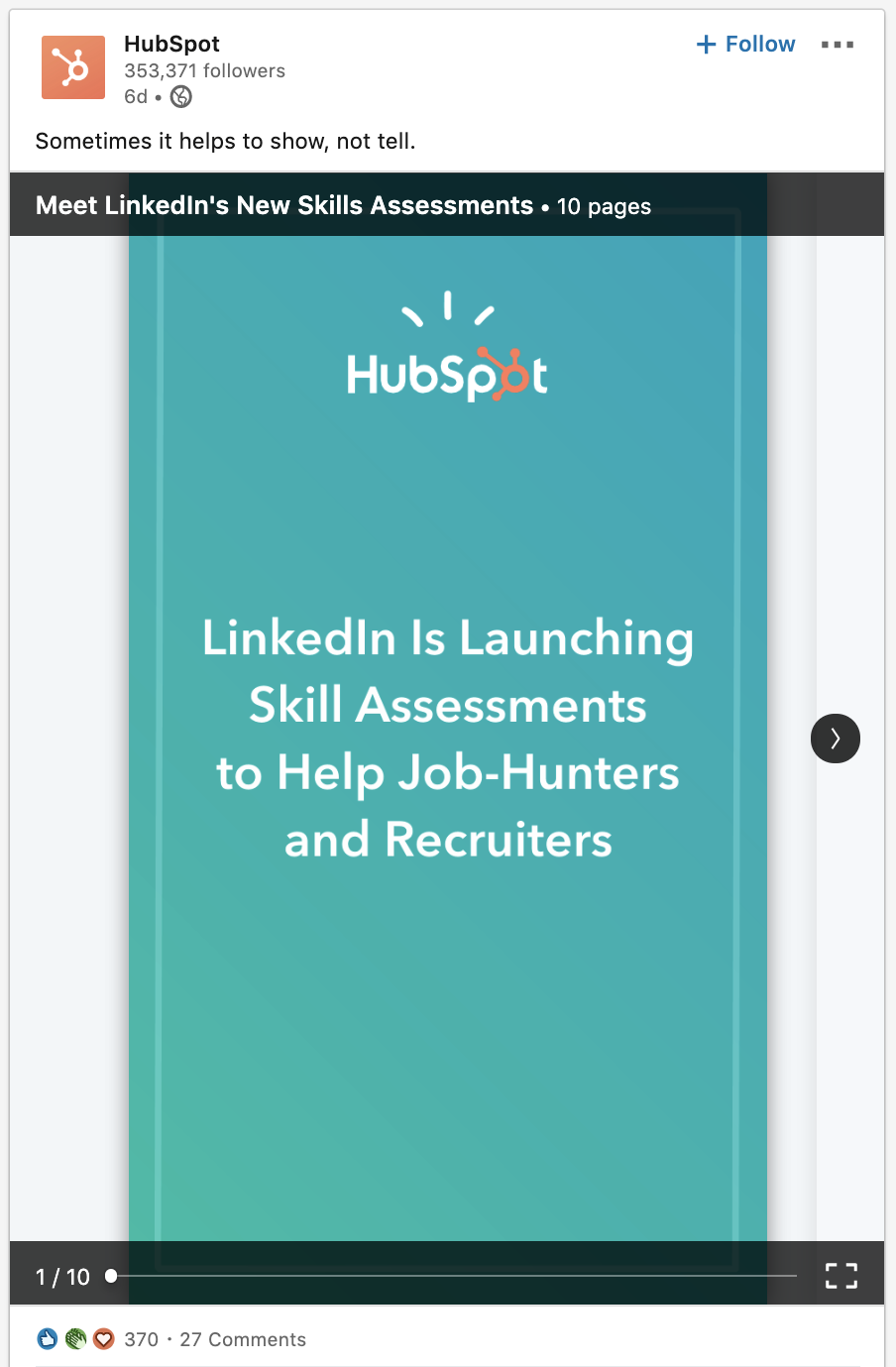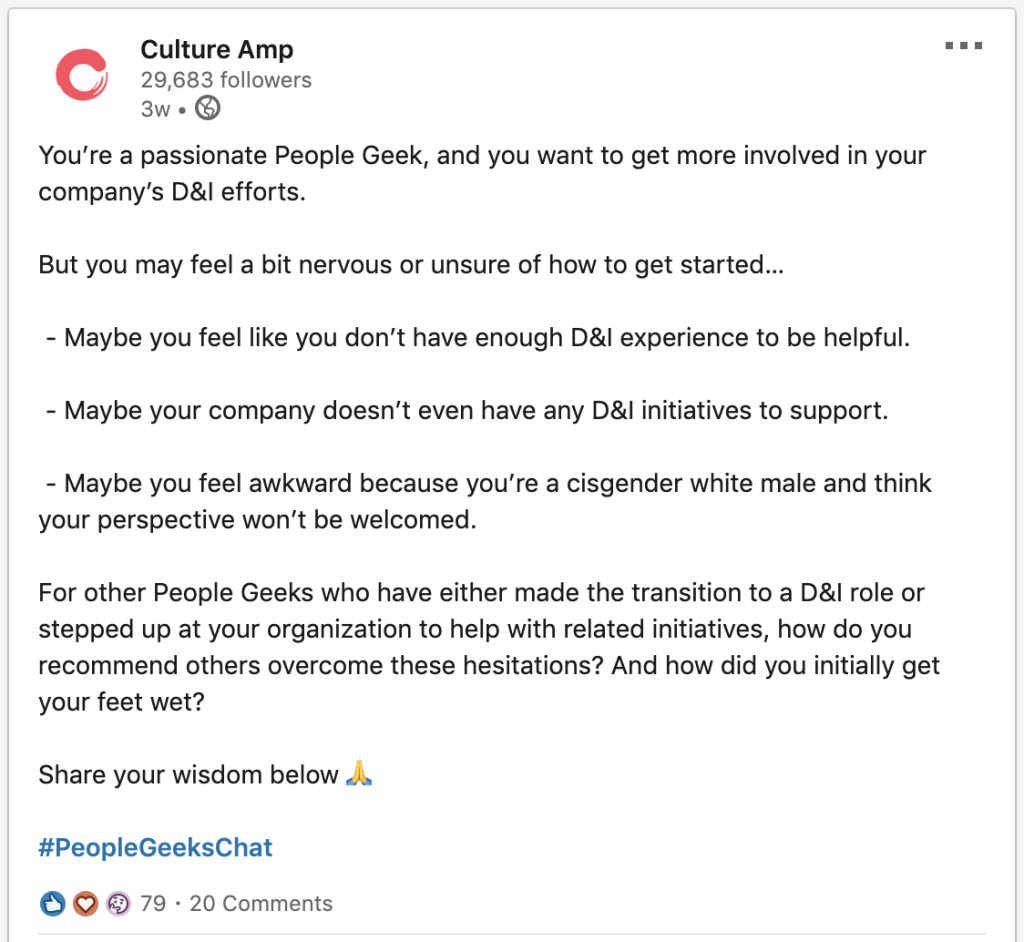3 Ways B2B Marketers Can Increase Engagement on LinkedIn
We don’t do business the way we used to, but a lot of B2B marketers are still taking an outdated approach to their LinkedIn company pages.
Today’s consumers want to connect with the brands they buy from. In fact, 64% of people expect brands to connect with their consumers, and they rank social media as the number one channel where that can happen. But for some reason in B2B marketing, we sometimes forget that our buyers are just as influenced by brand affinity, storytelling and emotions as they are when choosing products in their personal lives.
While there are of course specific nuances to B2B marketing—buying thousands of dollars of services or software is a bigger decision than choosing your toothpaste, after all—the way people want to engage with B2B brands on social media isn’t as different from B2C as you might expect. Your audience is still looking for creative, entertaining and engaging content that builds their trust in your brand and sets expectations for what you’ll deliver when they choose your products or services.
In this article, we’ll cover three ways B2B marketers can increase engagement on LinkedIn Pages, and we’ll share actionable inspiration from a few brands leading the pack. Let’s dive in!
1. To increase engagement, rethink your LinkedIn content
First, let’s set a baseline: what’s the definition of engagement when it comes to LinkedIn? It boils down to getting a response—and an action—from your audience. Our most recent Sprout Social Index found that the majority of marketers define engagement as receiving likes and comments (72%), earning shares on their content (62%) and interacting with consumers (60%).
To inspire action, you have to make them feel something. Your company’s LinkedIn Page isn’t a storefront, but too many B2B marketers make the mistake of focusing on straightforward product content and customer testimonials and forgetting about the entertaining, engaging content that their buyers are looking for. That’s not to say that product and customer content can’t be entertaining—it absolutely can, and people do love to window-shop—but you need to shift your content creation mindset from informational to entertaining, inspiring and educational.
The challenge in front of B2B marketers is how to take a sometimes-complex topic and turn it into creative, consumable social content. Not only will this approach make your content more engaging, but it will help build brand loyalty and trust in your company as a formidable expert in your space.
Let’s take an example every marketer is familiar with: video. Pearce Delisle, who leads LinkedIn’s North American Content Marketing Evangelist team, recently joined us for a #SproutChat discussion on B2B marketing basics and shared his advice on what B2B marketers should be doing differently:
B2B brands should be tapping into the full breadth of video content, not just defaulting to the stereotypical ‘talking head’-type formats, customer testimonials, product demos, but...content that really taps into the heart of entertainment, creativity and more that emotional human-to-human connection. — Pearce Delisle, Content Marketing Evangelist, LinkedIn
A great example of this in action is how Wistia promoted a recent episode of its Brandwagon video series by sharing a clip of their interview with industry expert Rand Fishkin. Instead of using a straight shot from the final talk show episode, they shared a one minute clip from his interview that used a behind-the-scenes camera angle, showing the full set and range of interaction taking place.
Your content doesn’t need all the polish of an advertisement to successfully engage your audience. Incorporating authenticity and the exclusive feeling of a behind-the-scenes perspective are just as valuable as production quality when it comes to building a credible, expert brand. Similar to Wistia’s example, if you have content you’ve created for another platform that would be applicable to your LinkedIn audience, think about how you could reuse it or repackage it.
For more LinkedIn Page content inspiration, check out these 10 ideas straight from the experts at LinkedIn.
2. Cultivate your brand’s LinkedIn presence like you would your own
We all know that person—the one who constantly promotes themselves, asks for favors and never reciprocates, and treats their social feeds like a personal megaphone.
You don’t want your brand to be that person.
Instead, think of someone else in your network—someone who is insightful, helpful and generous with their knowledge. That’s who you want your brand to be.
To get there, you need to take the same people-first approach you’d use within your own professional network, and treat your company page as a way to build community. Instead of constantly posting branded content, talk to your audience about their experiences and beliefs.When people respond to your content, respond in kind. When they ask questions, respond quickly and with a personal touch. To do this at scale, brands can create a list of pre-approved and on-brand replies to common questions, then select and customize the appropriate response.
One approach we’ve had a lot of success with at Sprout Social is what we call community questions. A lot of our content is highly visual, featuring videos, illustrations and photographs. Community questions go back to basics: We ask our audience one simple question, in plain text, and see what they have to say.
These questions don’t only get our audience to interact with us, they get them talking to each other. The study on social media connection that we referenced above found that 78% of people want brands to use social to bring them together—which speaks volumes to the value of using LinkedIn to cultivate community.
To make sure your LinkedIn Page is as welcoming and engaging as possible, use LinkedIn’s Page completion meter to uncover missing fields or new features for you to take advantage of—similar to the completion meter you see on your personal profile.
Complete LinkedIn Pages generate 30% more page views per week compared to incomplete ones, meaning that you can use this tool to create a more visible, highly-visited and engaging Page for your audience to visit and follow.
3. Test and experiment to learn what your audience likes
One of the greatest challenges we face as social marketers is identifying and understanding our target audiences. If your goal is engagement, it’s important to experiment and uncover what resonates with your target audience. In a field that moves as fast as social, experimentation is more important than perfection.
Not every effort will be a hit, and that’s completely fine—you’ll learn just as much from what flops as you will from what succeeds. Here are a few areas you can develop tests to get started.
Post timing
Every audience has a unique sweet spot for engagement. To find the best times to post on LinkedIn in terms of when your audience is most inclined to engage, assess engagement with similar content posted at different times over the course of a specific time period (for example, 30 days). If you don’t have time to test, or want to start with a baseline, our data science team has assessed thousands of brands and found that Wednesday at 9–10 a.m. and noon are two of the best times to post for engagement.
Media/content types
If you’ve had some success with your content, but aren’t seeing quite the engagement you’d hoped for, develop hypotheses so you can test what makes your audience tick.
For example, if you frequently share employee spotlights, could you test using LinkedIn’s employee engagement content types against one another? Try a Kudos to celebrate the great work of one of your employees vs. a Team Moment to welcome a new hire to your organization.
If you share a lot of links back to content on your website, could you try repurposing content from your website into document posts that live on LinkedIn, like this one from Hubspot?
If you want to try out community questions like I described above, could you test a short-form approach (as in our example) vs. a long-form approach like this one from CultureAmp?
Launch and iterate
There is a huge opportunity for marketers to tap into the enormous audience for B2B brands on LinkedIn, as long as they’re willing to be creative, invest in building relationships and learn from their data. So whether you’re refining your social strategy for the year ahead, or planning your next campaign, don’t hesitate to challenge your own assumptions and take risks with your LinkedIn content. Your audience—and your engagement metrics—will thank you.
To keep pace with the latest thinking in digital marketing, subscribe to the LinkedIn Marketing Blog today.



